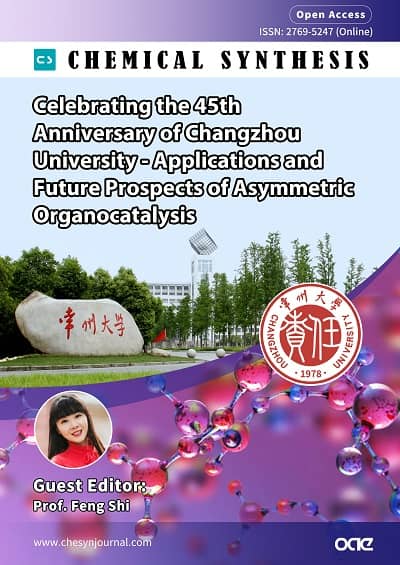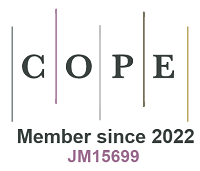
Topic: Celebrating the 45th Anniversary of Changzhou University - Applications and Future Prospects of Asymmetric Organocatalysis
Guest Editor
Special Topic Introduction
Chiral compounds are widely found in numerous pharmaceuticals, functional materials, chiral catalysts and chiral ligands. Consequently, the synthesis of chiral compounds has become an important goal in the community of chemistry, medicinal chemistry and materials science. Among various approaches, asymmetric catalysis, for which the 2001 Nobel Prize in Chemistry was awarded, has been demonstrated to be the most efficient method for accessing chiral compounds. Asymmetric catalysis mainly includes metal catalysis, enzyme catalysis and organocatalysis. Particularly, asymmetric organocatalysis was the research area recognized by the Nobel Prize in chemistry in 2021. Undoubtedly, asymmetric organocatalysis has unique advantages such as easy preparation and high stability of chiral organocatalysts, mild and environment-friendly reaction conditions, and avoiding transition-metal contamination in the chiral products, especially in pharmaceuticals. As a result, due to the advantages of asymmetric organocatalysis in synthesizing enantioenriched molecules with potential bioactivity, developing organocatalytic asymmetric reactions and discovering their applications in the asymmetric synthesis of optically pure molecules have been and will continue to be a long-lasting topic in the research field of asymmetric organocatalysis. This Special Issue focuses on the applications and future prospects of asymmetric organocatalysis, which is dedicated to Changzhou University on the occasion of her 45th anniversary in 2023. More importantly, this Special Issue will showcase and highlight the latest findings in the field of asymmetric organocatalysis and other related research fields, which will inspire chemists worldwide to prompt future development and applications of asymmetric organocatalysis.
Specific areas to be covered include, but are not limited to:
● Development of organocatalytic asymmetric reactions
● Organocatalytic asymmetric synthesis of chiral molecules
● Application of chiral molecules as organocatalysts
● Asymmetric organocatalysis-directed catalyst design
● Theoretical investigation on asymmetric organocatalysis
● Cooperative or relay catalysis involving organocatalysis
● Applications of organocatalysis in industrial synthesis
● New routes for the synthesis of chiral organocatalysts
● Asymmetric organocatalysis in medicinal chemistry
● Asymmetric organocatalysis with polymeric materials
Specific areas to be covered include, but are not limited to:
● Development of organocatalytic asymmetric reactions
● Organocatalytic asymmetric synthesis of chiral molecules
● Application of chiral molecules as organocatalysts
● Asymmetric organocatalysis-directed catalyst design
● Theoretical investigation on asymmetric organocatalysis
● Cooperative or relay catalysis involving organocatalysis
● Applications of organocatalysis in industrial synthesis
● New routes for the synthesis of chiral organocatalysts
● Asymmetric organocatalysis in medicinal chemistry
● Asymmetric organocatalysis with polymeric materials
Keywords
Asymmetric organocatalysis, organocatalysis, asymmetric catalysis, organocatalysts, enantioselectivity, asymmetric synthesis
Submission Deadline
31 Mar 2023
Submission Information
For Author Instructions, please refer to https://www.oaepublish.com/cs/author_instructions
For Online Submission, please login at https://www.oaecenter.com/login?JournalId=cs&IssueId=cs2303311227
Submission Deadline: 31 Mar 2023
Contacts: Zoe Lee, Assistant Editor, [email protected]









